While the use of the various scents of rose within fragranced products may have fallen out of favor in decades past, their intoxicating aroma has increasingly followed modern women on their clothes, in their anti-aging beauty treatments and other personal care, home and away from home products, embracing us all more recently in its intoxicating halo.
With that, we thought we’d take a master perfumer’s approach to this fragrant ingredient, with a dive into the various types of rose essential oils and a few examples of the fragrances we’ve created for use in soaps, detergents, fine fragrances and other products for our global clientele.
Needless to say, it’s high time to celebrate rose again.
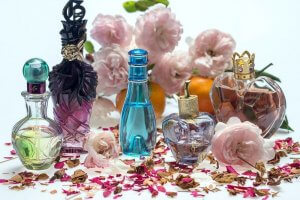
A Brief History Of The Rose
The beautiful, romantic and mysterious rose is an intoxicating bloom with a rich and colorful past. For thousands of years, its ethereal, velvety essence has fueled the imagination and psyche of artists, poets and perfumers such as our masters perfumers at Alpha Aromatics.
The exact origin of the rose isn’t known, but the earliest archaeological record of its presence concerns rose leaves discovered in the Colorado Rockies that date back some 35 million years ago to the Paleolithic era. About 3,000 BC, the images of roses first appeared in Asian artistic motifs, and during the golden age of ancient Egypt, Queen Cleopatra, while in the throes of a passionate love affair with Marc Anthony, was said to have filled an entire room more than one foot deep with rose petals.
The Romans built lavish rose gardens and especially during the reign of Nero (54 to 68 AD), rose water bubbled through fountains and adorned banquet tables with thousands of rose petals. At one bacchanale, Nero installed silver pipes so his guests could be spritzed with rosewater between courses.
Dioscorides, a Greek physician, believed that roses had cooling and astringent properties. Native Americans too, used parts of the rose medicinally to soothe inflammation and reduce the swelling of wounds. During the Victorian era of the late 1800s, it became fashionable to feature roses and other flowers in homes.
Today, roses are everywhere, and for the modern woman, their alluring fragrance is easily detected on their clothes, in their beauty treatments, scattered over beds in honeymoon suites and even on top of scrumptious gourmet dishes.
Robert Demachy a prominent, early 20th century French photographer, believed that roses symbolized femininity and represented the many societal aspects of how women’s roles have changed across the decades. In his own words:”(Rose) perfume is so much more than fashion. It’s emotion and luxury, and it is also in some ways an expression of our collective longing.”

The Diversity and Complexity of The Rose Fragrance
Roses release their captivating fragrance when they are ready for pollination, which is usually in the early morning hours at the onset of summer. The flowers are half-open when they are harvested. Although distinctive, their scent can be fleeting because cutting them down modifies the release of naturally occurring chemicals.
For the renowned perfumers at Alpha Aromatics, within the world of roses the darker colored ones are best known for their dense and satiny petals and the most unforgettable scents. Red and pink roses come the closest to the true rose fragrance. The aroma of white and yellow blooms is reminiscent of violets, lemon and nasturtium. Roses with orange colorations are mostly known for their fruity, violet and clove scents.
The Rose Steam Distillation Process
Generally speaking, the most popular method of extracting and isolating rose essential oils from plants is steam distillation. In this process, timing is essential because in order to obtain the highest quality rose oil, the fields have to be harvested before the sun shines too brightly and evaporates the precious oil.
After workers have finished picking the roses by hand for the day, the fresh blossoms are rushed to the distillery where the process immediately takes place.

With steam distillation, the temperature applied alters the molecular composition of both the plant matter and the essential oil. Via a condensation and collection process, the steam vaporizes volatile compounds who causes the fresh rose blossoms to release their essential oil into the vapor.
This fragrant vapor is made more concentrated by cooling, and the final stage of the process is the separation of the oil from the water, which is easily discerned by the difference in density.
Solvent Extraction
Solvent extraction is another method utilized to remove natural products from those plants that cannot tolerate the high heat generated in steam distillation. The resulting products are not true essential oils because they are mixed with other elements as well.
This process separates a plant compound into its parts based on the solubility of those elements. Some of the more commonly used solvents are: petroleum ether, methanol, ethanol, or hexane.
Solvent extraction is gaining a lot of popularity these days especially when the raw plant material consists of delicate flowers such as: mimosa, carnation, tuberose, gardenia, jasmine, and narcissus among others. It is also the recommended process in cases when steam alone will not relinquish their desired essential oils.
Absolute Extraction
This multi-step process is costly and it involves the creation of a solvent via the saturation of raw plant materials under vacuum. The next phase involves removing the solvent via evaporation and the semi-solid residue is called concrete, which is soluble in both carrier oils and alcohol.
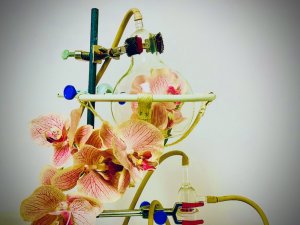
Perfume manufacturers use this amalgam for creating solid perfumes. The mixture is then steam-distilled which separates the aromatic substance from the alcohol and the resulting aromatic material is called absolute. It is highly concentrated, extremely fragrant and contains a myriad of pigments, waxes and other compounds.
The Various Types Of Rose Essential Oils
Rose Otto
Consider the fact that there are 40-60 blossoms in each drop of Rose Otto, and that 250 pounds of petals are needed to create just one ounce of this precious essential oil! Also known as Rose Attar, and extracted through steam distillation, this essential oil dates back to the 10th century civilization of Persia, which was the first to import roses to Europe.
This highly prized essential oil is well known for its rich, floral scent and unlike other most others of its ilk, develops a waxy consistency when stored at temperatures under 60° F.
The potent fragrance of Rose Otto is like that of freshly cut rose petals. The expert perfumers at Alpha Aromatics know that only a small amount is needed when blending because it can easily overpower other scents.
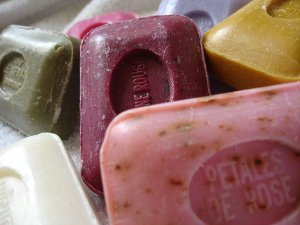
Rose Otto has many applications and can be used both aromatically and topically. It is a very popular ingredient in creams, lotions and perfumes because it contains large amounts of naturally occurring geraniol, which is known for its sweet, rose aroma.
Rose Otto stands apart from other essential oils because of its capacity to both wax at cooler temperatures, and made into fluid again by heating it in the hands or pocket. At room-temperature the oil is dense and thick, and its fragrance becomes more prominent as it warms on the skin.
Rose Alba
These pink blush and white blooms have graced gardens dating back to the Middle Ages. Grey-green foliage serves to exemplify their fragile beauty. This category of rose is among the hardiest of all, as blooms require minimal attention and flourish under the most unfavorable conditions. They have the capacity to bear up against partial shade better than most roses, are almost virtually disease free and require little pruning.
Rose Alba essential oil aka White Rose Otto Oil is emotionally uplifting and it has has a much more intense aroma than Rosa Damascena. It is also more labor-intensive and expensive since twice as many rose flowers are needed to produce 1 kg rose Alba oil.
The heavenly aroma of this oil is a natural mood lifter. It is well known for its healing properties and its ability to balance human emotions, making it especially useful during the feminine cycle.
Rose Absolute
Although the two essential oils differ in scent, color and density, Rose Otto and Rose Absolute do have some things in common. Both are acquired from the petals of Rose Damascena, a species indigenous to Syria that is cherished in both perfume and aromatherapy formulations.
Derived via solvent extraction and reddish in color, Rose Absolute is coveted by the perfume masters at Alpha Aromatics because the fragile fragrance is so close to that of an actual rose.

Rose Bulgarian
This essential oil has a fragrance that is very rich, deep, sweetly floral and slightly spicy and honey-like. It is cultivated in the heart of the Kazanlak Valley of Roses, which is, according to Wikipedia “a region in Bulgaria located just south of the Balkan Mountains and the eastern part of the lower Sredna Gora chain to the south.”
Primarily utilized for the production of fine perfumes, it provides a long lasting fragrance that is easily compatible with other scents including but not limited to: bitter bergamot, soothing chamomile, pungent ginger, green, slightly sharp vetiver; creamy sandalwood; calming lavender, and tart neroli.
Jack Rose
Its name honors Jean-François Jacqueminot (1787-1865), a French general of the Napoleonic Wars. Also known as General Jack, this rose was developed in 1853 by a gardener named Rousselet and is considered by many horticulturists to be an ancestor of the modern rose. Known for their extremely fragrant bouquet, these large, hybrid double flowers are always clear red to deep pink, but as they age, darker purple tones dominate their color profile.
Rose Centifolia
It is believed that the Dutch developed this fragrant hybrid rose variety between the 17th and 19th centuries. While a rose by any other name is still a rose to quote a very eloquent bearded Elizabethan bard, this variety is also known as the Cabbage Rose and the Province Rose.
Cultivated in Egypt and Morocco, as well as in the Grasse region of France and in China, this bloom exudes an intensely rosy, sweet, deeply floral, spicy, woody and honey-like aroma. Its essential oil is very challenging to distill due to the extreme delicacy of its many petaled blooms.
Rose Damask
Mainly cultivated in Bulgaria and Turkey, with smaller producers in France, India, Iran, and Greece, the deep, rosy, fresh fragrance of this hybrid bloom’s essential oil ranges in color from clear to a pale yellow or greenish tint. Also known as Pink Damask Rose, Rose of Castille and Rose Dasmascena, the fine bouquet of these flowers has symbolized passion and beauty down through time.
Blooms can be light to moderate pink to light red. The petals are commercially harvested for the production of rose oil to make via absolute solvent extraction rose water and rose concrete.
Damask rose essential oil is known for is ability to to soothe and comfort the mind and alleviate feelings of depression, anger, grief, fear, nervous tension and stress. It can also provide help for the respiratory tract, digestive problems, menstrual issues and skin care. The petals are edible, serve as sugar substitutes and are often used to flavor exotic dishes, such as chicken with rose, which is a popular Iranian recipe.
Moroccan Rose Water
Extracted from the freshest petals of the Damask Rose which grows wild in Morocco’s Valley of Roses, rosewater is the fragrant by-product of steam distillation.
Hydrosol, which is the watery material that lingers after the essential oil is removed, still maintains a rich and potent scent even though it only contains between 10 and 50% rose oil. It is derived from the simplest combination of water and rose oil, and in this aspect differs from others of its ilk.
Due to its potent fragrance, Moroccan rose oil is often used as a base for perfume. Lovers of rosewater swear that if one closes one’s eyes, its powerful aroma is akin to strolling through a lush garden of spring and early summer blooms. Rosewater is slightly astringent and fleeting on the skin and only lasts about 10 minutes, but its effect is still charming and highly prized by the many rose perfume aficionados who number the clientele of Alpha Aromatics.
In Morocco, it is also widely used as an ingredient in gourmet desserts and exotic drinks.It is rich in minerals and anti-inflammatory and anti-bacterial compounds, which provide many benefits to both health and beauty.
Rose Geranium Oil
Belonging to a botanical family group often referred to as the Scented Geraniums, this essential oil is well known for its soothing effects that promote emotional stability and feelings of relaxation.
It is also said to be the essential oil that has the most superior notes of rose, which contributes to its power to uplift moods. For centuries, this essential oil, which is native to South Africa, was used medicinally and was so steeped in cultural legend that it was believed to possess the power to deflect evil spirits.
Alpha Aromatics And The Fragrance Of Rose
Located in suburban Pittsburgh, Pennsylvania, and in continuous operation since the mid 1940s, we are a family run business known for our masterful ability to attract and inspire commercial traffic and induce brand loyalty by creating a memorable olfactory bridges between products and consumers through the thousands upon thousands of fragrances we’ve created for clients around the globe, many of which utilize the ever fragrant subtlety the rose essential oils provide.

In the words of our master perfumer, Roger Howell, “I know that the use of rose essential oils fell out of favor, and more or less existed within the confines of underwear drawers for some time. But nowadays, their intoxicating scent follows modern women on their clothes, in their anti-aging beauty treatments, scattered over beds in honeymoon suites, drizzled on top of exotic gourmet dishes and embracing us all in its intoxicating halo. And that’s so well deserved.”
The following are some of our favored fragrance blends featuring the scent of rose:
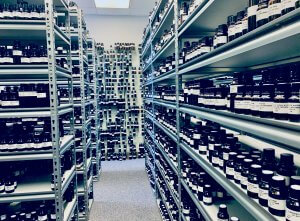
Pomelo And Cassis
A top note of sharp, grapefruit infused citrusy pomelo, sweet, dark, berry-like cassis and dry, aromatic citron opens this summery fragrance that conjures warm sea breezes and crisp, clean linen sheets. These soon give way to a heart note of rich Jasmine, spicy, romantic Rose and musty, green Cyclamen. The scent completes with a woody base note of alluring Vanilla.
Wild Honey Lotus
This intoxicating floral fragrance transports the wearer to remote, tropical places where its sacred namesake is steeped in ancient folktales and symbolism.
It is marked by top notes of fresh, sweet and juicy orange and zesty Red Berry, which soon acquiesce to a complex middle note of lemony, green Geranium, sweet Honeysuckle, sugary, aromatic rose, spicy, woody Clove and haunting Blue Lotus. A blended base note of warm, honey Nectar and rich, earthy Sandalwood. completes this evocative scent.
White Tea and Thyme
This beautiful soothing scent is a favorite among international hoteliers as its woodsy character is particularly appealing to Asian cultures where the burning of incense is a valued as a cultural and religious aspect of every day life.
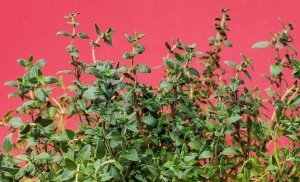
A bouquet of soothing White Tea infused with revitalizing, crisp, clean Citrus opens this fragrance which soon gives way to a heart note featuring blends of Night-Blooming Jasmine, delicate rose petals and floral, earthy and nutty Sage, which balances the finishing base note of strong, green Thyme and woodsy, musky Cedar.
Green Tea and Lemongrass
This spicy, floral, fresh and complex fragrance opens with a top note marked by faintly sweet Green Tea leaves, tangy Lemongrass and blends of sour, sweet Lemon and juicy Mandarin.
Middle notes of aromatic, musky Rose, sweetly, green Jasmine Petals and Orange Blossom soon dominate and lend a sweetness to the scent, evoking lush, tropical landscapes and dazzling sunsets. A base note of earthy, woody Cedar marks the end of the fragrance.
Tonka Bean And Rose
South America’s Tonka Bean and its fragrant bouquet of spice, vanilla, cherry and almonds is the foundation for this fragrance that opens with a subtle nutty top note and soon gives way to blends of sweet, soothing Jasmine, fragrant, creamy and lemony Magnolia Blossom, and spicy, blushing and musky Rose. An ambery, honey-like Vanilla, sweet Coumarin, coconut and creamy Tonka Bean and a sultry, Musk base note complete the fragrance.
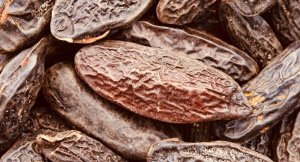
In conclusion
If you’re a product developer, a purchasing director, formulator, product development scientist, senior cosmetic chemist, brand owner or purchaser or you’re a business owner looking to add a rose-infused private label fragrance to your product or product line, call our team today and let us help you articulate your brand through the fragrant power scent!
Final thought on roses: No rose could ever rue the exquisite embroidery of sparkling drops of dew.~ Riumin

Photo Credits: Pixabay
 alpha aromatics®
alpha aromatics®